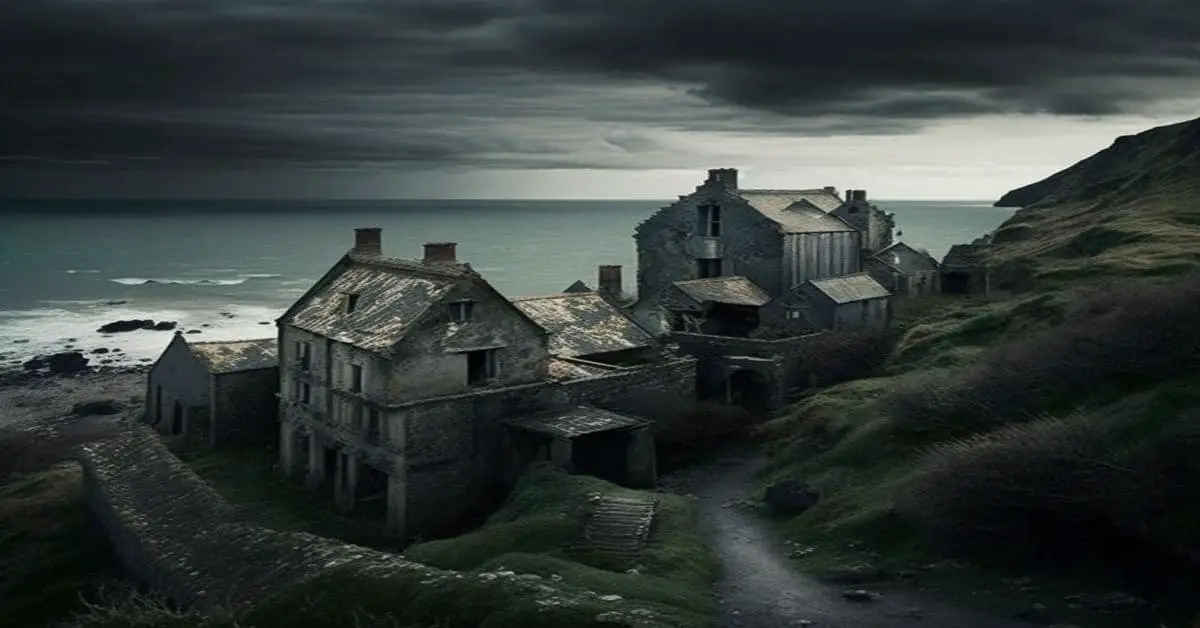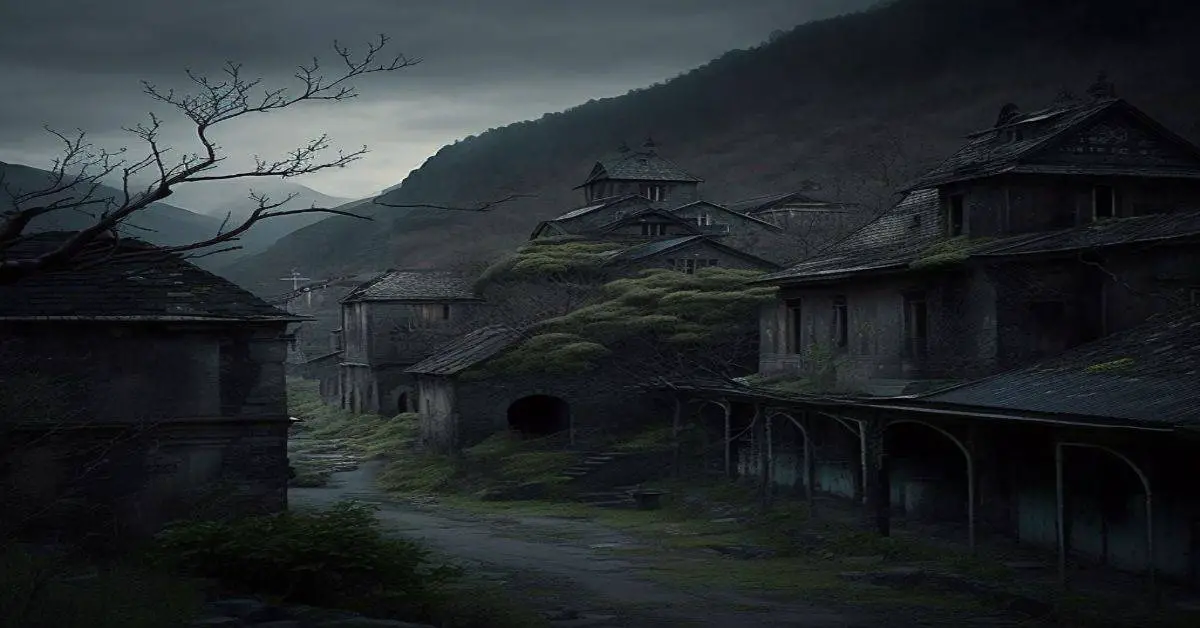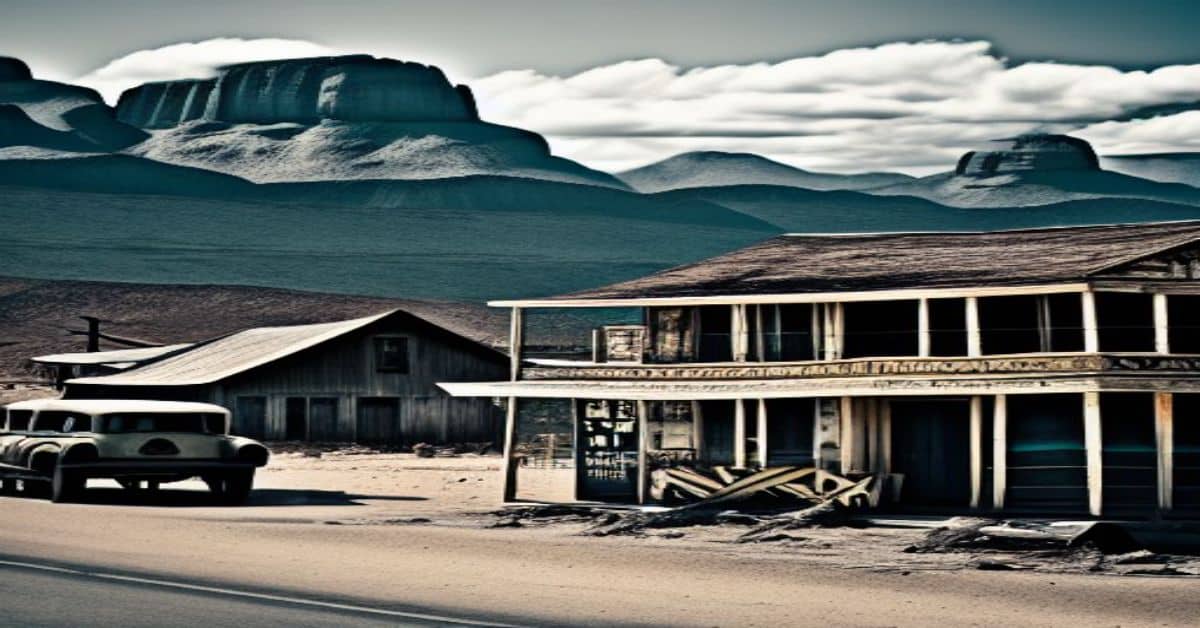Like a time capsule frozen in the past, the ghost town of Bluewater in Cibola County, New Mexico, offers a glimpse into the region’s rich history. Once a thriving cattle ranching community founded in 1850, Bluewater is now a deserted town that has become a popular destination for history buffs and adventurous travelers alike.
The area’s natural beauty, including Bluewater Lake and Canyon, and its inhabitants’ fascinating stories make it a unique place to explore and discover. Bluewater’s history is closely intertwined with the development of the American West.
The settlement began as a small ranching community that grew as more people arrived in the region seeking opportunities and a better life. However, a combination of economic downturns and changing industries led to the town’s decline, and today, only a handful of buildings and ruins remain.
Despite this, Bluewater’s story continues to captivate visitors drawn to its eerie charm and the secrets buried within its soil.
Key Takeaways
- Bluewater Ghost Town was a thriving cattle ranching community founded in 1850 that has become a popular destination for history buffs and adventurous travelers.
- Bluewater’s history is closely intertwined with the development of the American West, and its story continues to captivate visitors drawn to its eerie charm and the secrets buried within its soil.
- Bluewater Canyon is a picturesque destination known for its L-shaped Bluewater Lake, which is fed by Azul Creek and other springs, giving it a unique bluish hue and offers recreational activities such as boating, fishing, and camping.
- The Blue Mesa and the Bluewater Valley irrigation project are just a few examples of the rich history that can be discovered in the Bluewater Ghost Town, making it a must-visit destination for nature enthusiasts and those seeking to explore and discover.
Settlement and Cattle Ranching
The settlement of Bluewater Valley began in 1850 with a small irrigated farm by Martin Boure.
It wasn’t until 1870 when Frenchmen organized a cattle company and irrigated ranches from a small reservoir, marking the start of cattle ranching in the area.
However, the 1891/92 drought caused cattle to die, and the project was abandoned.
In 1894, Al Tietgen built a dam across Bluewater Canyon and founded a Mormon settlement.
The Tietjen bloodline is still strong in the area today.
The settlement and cattle ranching efforts were the start of the community’s growth, and it set the foundation for the Bluewater area to become a thriving town.
Bluewater Lake and Canyon
Located in Cibola County, Bluewater Canyon is a picturesque destination known for its L-shaped Bluewater Lake, which spans 7 miles in length and 3 miles in width.
The lake is fed by Azul Creek and other springs, giving it a unique bluish hue. The Triangle Bar Spring, named after the nearby Triangle Bar Ranch, is also located within the area.
Bluewater Lake is a popular recreational destination, offering boating, fishing, and camping activities. The lake is home to various fish species, including rainbow trout, channel catfish, and smallmouth bass. Visitors can also enjoy wildlife observation, as the surrounding area is home to diverse wildlife, including deer, elk, and coyotes.
In addition to Bluewater Lake, Bluewater Canyon is known for its mineral deposits in rocks, which turn blue like giant peacock feathers at certain times of day. The area offers several hiking trails, allowing visitors to explore the stunning natural beauty of the canyon.
The Bluewater Canyon is a must-visit destination for nature enthusiasts, offering a serene and peaceful environment for those seeking to escape the hustle and bustle of city life.
Other Bluewater Sites
Nestled in the heart of New Mexico, the Blue Mesa offers a stunning view of the surrounding Madre Mountains. This geological formation is located six miles east of the mountains and is named after the mineral deposits in the rocks that give it a blue hue. The Bluewater mineral deposits are made up of copper, zinc, and lead, which turn the rocks into giant peacock feathers at certain times of the day. The Blue Mesa is a popular destination for hikers and rock climbers who come to explore its unique geological features.
The Bluewater Valley irrigation project was a significant undertaking in the late 1800s that aimed to irrigate ranches and farms in the area. The project was initiated by Frenchmen who organized a cattle company and irrigated ranches from a small reservoir in the valley. However, a drought in 1891-92 caused cattle to die, and the project was abandoned.
In 1894, Al Tietgen built a dam across Bluewater Canyon and founded a Mormon settlement. The Tietjen bloodline remains strong in the area to this day. The Blue Mesa and the Bluewater Valley irrigation project are just a few examples of the rich history that can be discovered in the Bluewater Ghost Town.
Frequently Asked Questions
What caused the drought in 1891/92 that led to abandoning the cattle ranching project in Bluewater Valley?
The cattle ranching project in Bluewater Valley was abandoned due to a drought that occurred between 1891 and 1892. The causes of the drought are unclear, but it significantly impacted cattle ranching in the area, leading to the project’s eventual abandonment.
How did Al Tietgen acquire the land to build the dam across Bluewater Canyon and found the Mormon settlement in 1894?
Al Tietgen acquired the land for the Mormon settlement in Bluewater Canyon by purchasing it from the previous owners. The specific details of the transaction are not available, but Tietgen was known for his business acumen and may have negotiated a favorable deal.
What other minerals can be found in the rocks of Bluewater Canyon besides the ones that give them a blue hue?
Geological formations in Bluewater Canyon contain copper deposits and minerals that turn the rocks blue. Geologists have documented these deposits and are part of the region’s unique geological makeup.
Are there any hiking trails or recreational activities available at Blue Lake?
Hiking trails and fishing spots are available at Blue Lake, located 1 mi east of Santa Rosa. The water is intensely blue due to its depth, providing a picturesque environment for outdoor activities.
What is the significance of the Triangle Bar Spring being named after Triangle Bar Ranch?
The Triangle Bar Spring, located in Bluewater Valley, was named after the Triangle Bar Ranch. This ranch was involved in organizing a cattle company and irrigated ranches in the valley in 1870.


